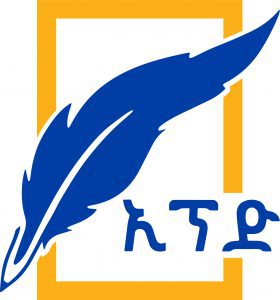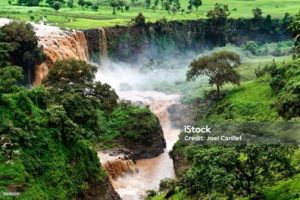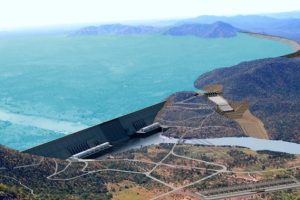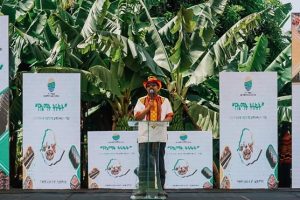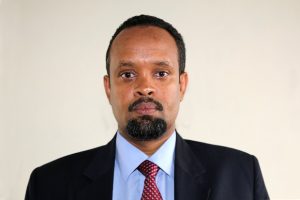
Although Ethiopia is blessed with many mineral resources, there is lack of research and studies to properly identify them. This indicates that a lot of work is expected from universities and research institutions to identify and utilize these mineral resources. It is believed that universities have a long way to go in supporting the development and training of educated human resources in the field, especially in the mining sector.
Most universities are also conducting researches and studies to identify mineral resources, especially in the regions where they are located. One of these is Wollo University. Information received from the University indicates that it is conducting encouraging work to identify and inform about minerals in the Amhara region by studying them.
Wollo University is working on the mining sector both on its own and with partner organizations, according to the university’s Director of Research Publication Ethics and inculcation, Seid Muhe Dawud (PhD).
He said that the University has been given three missions. One is teaching and learning, the second is research, and the third is community service. In terms of teaching and learning, it has a department of geology and technology education. It provides training related to mining and its management. It carries out many research projects related to mining itself and in collaboration with partner organizations. In terms of community service, it also carries out training and awareness-raising activities for those involved in mining development, as well as technology transfer.
He pointed out that there is a large amount of mineral wealth in Wollo area of Amhara region, where the University is located, and that research and development is underway. Some minerals such as Delanta Opal are under development; community service and technology transfer activities are being carried out in connection with these. There are minerals such as coal, limestone, precious metals for jewelry and other minerals in the areas where the University operates. Mineral identification and classification works are being carried out in the rivers that are tributaries of Abbay River.
As he explained, there is a situation where survey work has been done to find out what kind of mineral is found in which area. In-depth studies will be conducted in the future on the conditions where the minerals can be found. For example, a survey work has been done in reserve areas to indicate the location of coal in Ambasel. Based on this, a study is being conducted with the Amhara Regional Bureau of Mines to determine the amount of coal reserves in the area.
The University has currently conducted four new projects and submitted them to the regional Bureau of Mineral Resources Development, Dr. Seid said; he mentioned that studies are also being conducted on minerals that require further study in the region. Research work has begun this year to determine how much coal in Ambasel is suitable for investment. A very in-depth project is underway in the Oromo Nationality Zone to identify the amount of resources and the type of minerals by making a geological map.
This year, with the financial support received from the Industrial Mineral Development Institute, Wollo, Mekelle and Bulehora Universities are working together to strengthen the capacity of people involved in the production of jewelry and precious metals. They are also working on creating a website that connects them with the market through innovative technology. This includes producing the minerals, creating a market connection between the producer and the seller, and promoting the product.
He indicated that they are also working on reducing the risks that may arise during mining. Opal development is carried out in the Delanta area in a traditional way, and that people are often exposed to various harms and dangers. Awareness-raising activities are being carried out to reduce this risk and to use technology where it is needed.
The director announced that; Opal miners are being helped to reduce the damage and inconvenience by using solar energy when it gets dark. In addition, awareness-raising activities have been carried out to understand the extent and nature of the danger and how to protect themselves from harm. The Kombolcha Technology Institute provides technologies and other support that help them do their work more easily.
“Since opal mining is a process that involves many people from the beginning to the end and a lot of resources are spent, many studies are being conducted on this,” Dr. Seid said; in this regard, he pointed out that there are studies that the university is conducting with other partner organizations and studies conducted by individuals. Studies conducted at the individual level may go beyond research and reach the prototype stage.
He said that half of the projects the University is working on related to mining have been started this year. One of these is a project to strengthen the capacity of miners by integrating gem miners, sellers and buyers to make their work digital. This project is being implemented well.
He pointed out that research is also being done on the limestone of the Abbay River. Three other projects are underway with the regional mineral resources development office, while the University alone is studying the amount of coal resources in Ambasel.
The director also explained that the first task is to study in depth what types of minerals are present in which area and make a map. The initial work on the coal study has been completed and has been transferred to the regional Mineral Resources Development Bureau, and once the location of the coal is identified, the remaining work will be to study the potential reserve that could be offered for investors. Therefore, a study will be conducted to determine the abundance of the reserves.
The research on precious minerals is being carried out in a way that involves the country’s universities; connecting developers, sellers and buyers and providing innovative solutions.
The director explained that the University also provides training in two ways. If the work of individual researchers is not converted into research publications and is intended to be used for the benefit of the community, a one-time training is provided for up to 40 people. This type of training has been provided repeatedly.
Another type of training is demand-driven, and training is provided to developers or office professionals or district professionals. This is based on their needs. This training has also been provided repeatedly in many places.
He also indicated that other trainings are being provided to strengthen the associations and to extract resources in a less risky manner. Trainings are being provided to create a way for them to legally promote their products and themselves.
Dr. Seid also indicated that sometimes there is lack of capacity to study the mineral resources of the region. There is lack of capacity to provide the training to everyone, and for example, the districts and associations may not be able to provide the training to all; this problem will be a challenge to establish a system designed to make the trainings accessible to as many people as possible.
The Director stated that the region has potential mineral resources, and the university is working to identify and develop existing mineral resources. In addition, there are other minerals that have potential to be explored, but the University lacks the budget and technology to make this widely accessible.
The activities of the regional mineral resources development office, which has paid attention to the mining sector, are bringing encouraging changes. The office is helping the universities to research the mineral resources that have been identified as needing research, and that it is making great efforts to ensure that the results are used by developers.
As the Director explained, the university owns a laboratory where it analyzes and identifies minerals at its current capacity. The capacity of the laboratory allows it to carry out current tasks; when it encounters tasks that are beyond its capacity, it uses laboratories of partner organizations. In addition, there are situations where samples of some minerals are exported. For example, there are works that are carried out by the University itself with partner organizations in Addis Ababa to identify and classify precious minerals; there are also times when samples are sent to foreign countries.
“Let alone the mineral resources of the region, the mineral resources in South Wollo are not known which ones can be developed and which ones cannot,” the director explained, indicating that the University still has a lot to do.
He further stated that the University will inform the relevant bodies about the projects it has started and is currently in progress. In particular, the regional mining development office, the Ministry of Urban Development and Infrastructure and the Industrial Development Institute are working to provide the required amount and quantity.
He mentioned that the University is an applied university and that there are opportunities for it to work with partner organizations through the technology education department. Especially, as these research projects become effective, there will be many opportunities to expand the mining development and conduct other research projects.
BY BACHA ZEWDIE
THE ETHIOPIAN HERALD THURSDAY 3 APRIL 2025
